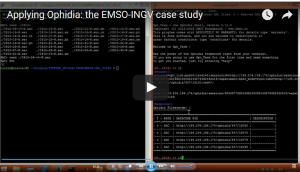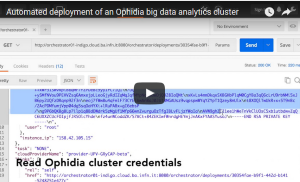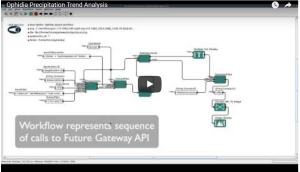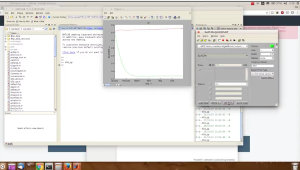The EC-funded project EOSC-hub started on January 1st 2018, with a mission to create the Hub: a central contact point for European researchers and innovators to discover, access, use and reuse a broad spectrum of resources for advanced data-driven research.
Environmental and Earth science
 The EMSO community
The EMSO community
EMSO (www.emso-eu.org) is a large-scale European Research Infrastructure in the field of marine environmental sciences supported by the EC. It is a geographically distributed infrastructure composed of several deep-sea monitoring systems deployed on specific sites in the European seas, from the Arctic to the Black Sea through the Atlantic Ocean and the Mediterranean, thus forming a widely distributed pan-European infrastructure.
EMSO scientific community focusses on a wide spectrum of natural processes: climate change, marine ecosystems evolution and marine geohazards. The community includes geophysicists for the study of the energy and mass exchange at the Benthic Boundary Layer (BBL) with a multi- and inter- disciplinary approach, biologists and biogeochemists for studying the influence of the local marine environmental changes on the ecosystems, physical-oceanographers for climate changes and regional and local dynamics.
- INDIGO Champions: Stephen Monna and Giuditta Marinaro, INGV, Italy
 LifeWatch Community
LifeWatch Community
The Lifewatch community is currently distributed in different European countries which are involved in different projects in many fields biodiversity-related: marine researching, birds, genetics, etc.
Lifewatch is collaborating on two Case Studies: Algae Bloom and TRUFA. For algae bloom, the clear stakeholders are researchers on water quality (in particular Ecohydros, company who works in that field) and water management authorities, but can be extrapolated to other similar cases, in water quality or another kind of modelling. TRUFA has a growing community (~140 users at the time of writing this document) from all over the world (India, Brazil, United States, Europe, Japan, etc.). TRUFA is open to researchers with an institutional identity, so that the community is potentially very wide.
- INDIGO Champion: Fernando Aguilar Gómez, IFCA – CSIC, Spain
 The European Network for Earth System modelling
The European Network for Earth System modelling
The case study relates to the scientific community working on climate modelling, which is organized within the European Network for Earth System modelling (ENES). The institutions involved in this network include university departments, research centres, meteorological services, computer centres and industrial partners.
The case study deals with the climate models intercomparison data analysis, which is very challenging as it usually requires the availability of a large amount of data (multi-terabyte order) from multiple climate models. In such a context, from an infrastructure point of view, the Earth System Grid Federation (ESGF) provides a federated data infrastructure involving a large set of data providers/modeling centres around the globe (the IS-ENES project provides the European contribution to the ESGF infrastructure). ESGF has been serving the Coupled Model Intercomparison Project Phase 5 (CMIP5) experiment, providing access to 2.5PB of data for the IPCC AR5.
- ► INDIGO Champion and use case: Sandro Fiore, CMCC Foundation, Italy








